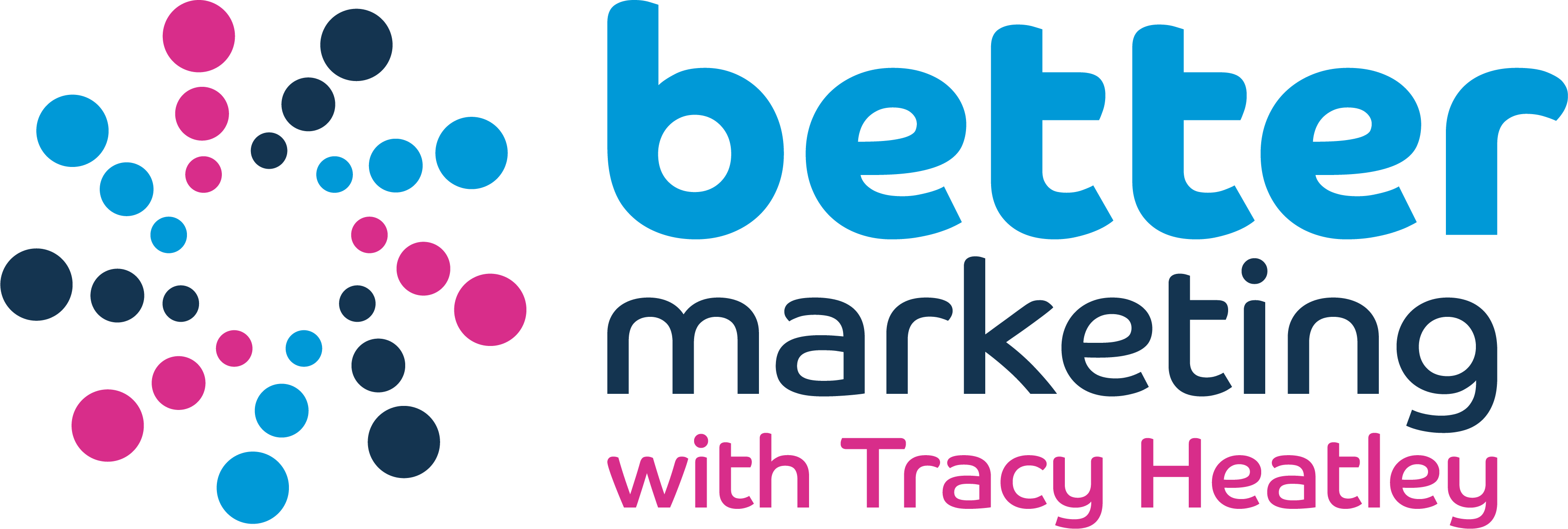AI Consultancy
Clarify, Create, Cultivate
AI Online Training
Teach, Train, Transform
AI Strategy Session
Shape, Sharpen, Strategise
Certified AI Marketing Specialist
I’m Tracy Heatley, one of the world’s first-ever CIM Certified AI Marketing Specialists. My mission is to help small businesses harness the power of artificial intelligence for smarter, results-driven marketing strategies. Whether you’re exploring my website for the first time or returning to learn more, I’m delighted you’re here.
AI Consultancy
Clarify, Create, Cultivate
AI Online Training
Teach, Train, Transform
AI Strategy Session
Shape, Sharpen, Strategise

AI Marketing Is More Than Just Technology
AI Marketing isn’t just about technology. It’s about leveraging innovative tools and strategies to create meaningful connections with your customers. By integrating AI into your marketing efforts, you can streamline processes, improve efficiency, and achieve exceptional results.
As a Chartered Marketer with decades of hands-on experience, I combine practical marketing knowledge with cutting-edge AI insights. My tailored solutions are designed to work specifically for your business and its unique needs.
Empowering You Through AI Marketing Expertise
From crafting effective AI strategies to delivering expert AI Consultancy, mentoring and training, my goal is to empower you with confidence and clarity. The ever-evolving digital landscape of AI Marketing doesn’t have to feel overwhelming when you have the right guidance.
Additionally, if you’re planning an event, I can bring my expertise to your audience as an engaging Keynote Speaker. I’ll deliver actionable insights that inspire and educate.
All this, and there’s some practical free resources here for your too with the Better Marketing Blogs and Better Marketing Podcasts.
Let's Unlock The Power Of AI Together
If you’re ready to take your marketing further, explore the AI Marketing Consultancy, Mentoring, and Training services I offer. Alternatively, book a free 30-minute discovery call with me via Zoom or Teams. Together, we’ll unlock the potential of AI Marketing and achieve remarkable results. Please note, if you’re on my Strategy Cycle™ Program, we will be doing a two hour one-to-one AI Strategy or ChatGPT Training session included as part of your program.
Discover the Power of AI Marketing
All in all, AI Marketing is revolutionising the way businesses perform marketing activities, and connect with their customers to achieve results. Therefore, by integrating artificial intelligence into your marketing strategy, you can unlock opportunities that were once out of reach for small businesses and inexperienced marketing teams. Take the first step toward smarter, faster, and more effective AI-driven marketing solutions.
Why Choose AI Marketing?
- Enhanced Personalisation: Deliver tailored experiences to your audience, improving engagement and loyalty.
- Streamlined Processes: Automate time-consuming tasks, so you can focus on strategic growth.
- Data-Driven Insights: Gain a deeper understanding of your audience and optimise campaigns for better results.
- Competitive Edge: Stay ahead of the curve by leveraging cutting-edge technology to outpace competitors.
How I can Help With AI Marketing
Without doubt, AI Marketing can feel overwhelming, especially if you’re not sure where to start. That’s where I come in. For one thing, if you’re looking to develop a comprehensive AI strategy, receive one-to-one mentoring, upskill yourself, or your team through training, for sure I provide the support and expertise you need.
Types Of AI Marketing Services
- AI Marketing Consultancy: Tailored strategies designed to meet your business needs.
- AI Online Training: Practical workshops and courses for business owners and marketing teams.
- AI Strategy Session: Personalised guidance to help you understand your options, establish implementation methods, and what you need to do to master AI tools.

Take the Next Step
Undeniably, AI Marketing is no longer a luxury; it’s a necessity for small businesses that want to thrive in today’s digital world. First of all, explore my consultancy, mentoring, and training services to see how I can help your business grow with effective AI Marketing Strategies.
AI Marketing Consultant
AI Online Trainer
AI Strategist

Hi, I’m Tracy Heatley, one of the world’s first-ever CIM Certified Artificial Marketing Specialists, and I’m here to help you make the most of AI for your small business marketing.
